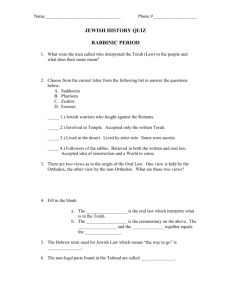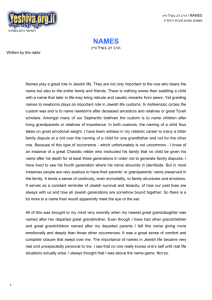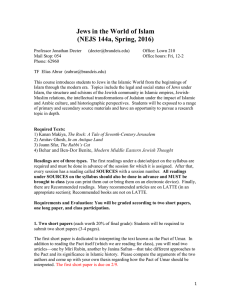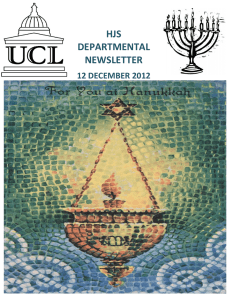Episode 4: The Crucible of Europe IV-1: Islamic Civilization/Islamic
advertisement
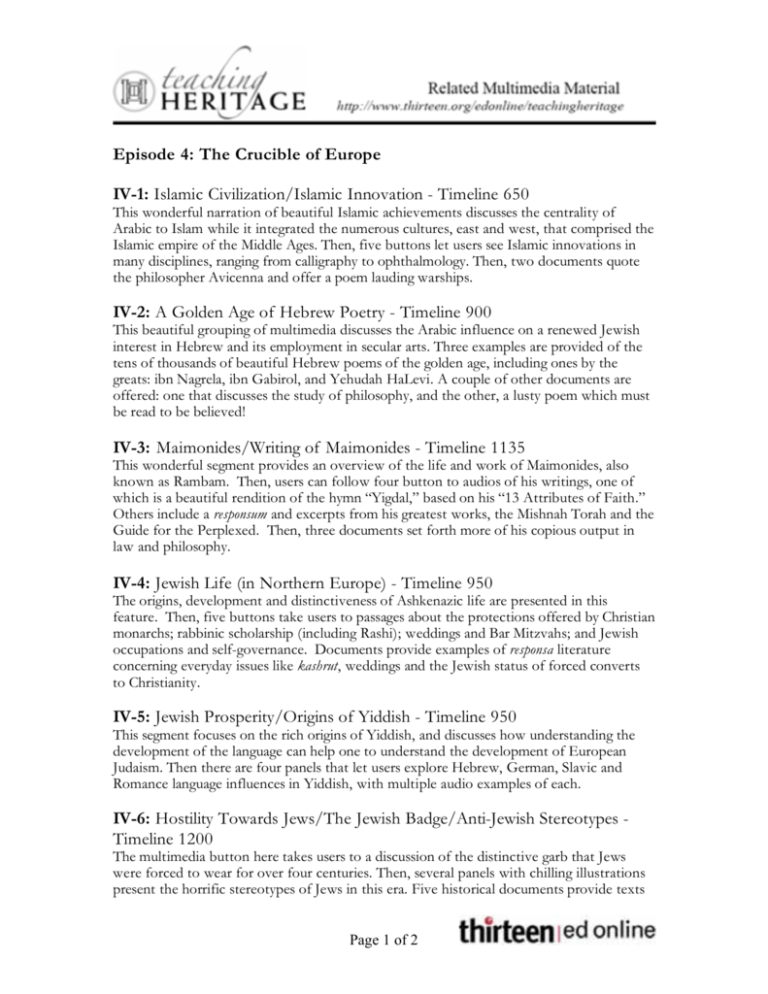
Episode 4: The Crucible of Europe IV-1: Islamic Civilization/Islamic Innovation - Timeline 650 This wonderful narration of beautiful Islamic achievements discusses the centrality of Arabic to Islam while it integrated the numerous cultures, east and west, that comprised the Islamic empire of the Middle Ages. Then, five buttons let users see Islamic innovations in many disciplines, ranging from calligraphy to ophthalmology. Then, two documents quote the philosopher Avicenna and offer a poem lauding warships. IV-2: A Golden Age of Hebrew Poetry - Timeline 900 This beautiful grouping of multimedia discusses the Arabic influence on a renewed Jewish interest in Hebrew and its employment in secular arts. Three examples are provided of the tens of thousands of beautiful Hebrew poems of the golden age, including ones by the greats: ibn Nagrela, ibn Gabirol, and Yehudah HaLevi. A couple of other documents are offered: one that discusses the study of philosophy, and the other, a lusty poem which must be read to be believed! IV-3: Maimonides/Writing of Maimonides - Timeline 1135 This wonderful segment provides an overview of the life and work of Maimonides, also known as Rambam. Then, users can follow four button to audios of his writings, one of which is a beautiful rendition of the hymn “Yigdal,” based on his “13 Attributes of Faith.” Others include a responsum and excerpts from his greatest works, the Mishnah Torah and the Guide for the Perplexed. Then, three documents set forth more of his copious output in law and philosophy. IV-4: Jewish Life (in Northern Europe) - Timeline 950 The origins, development and distinctiveness of Ashkenazic life are presented in this feature. Then, five buttons take users to passages about the protections offered by Christian monarchs; rabbinic scholarship (including Rashi); weddings and Bar Mitzvahs; and Jewish occupations and self-governance. Documents provide examples of responsa literature concerning everyday issues like kashrut, weddings and the Jewish status of forced converts to Christianity. IV-5: Jewish Prosperity/Origins of Yiddish - Timeline 950 This segment focuses on the rich origins of Yiddish, and discusses how understanding the development of the language can help one to understand the development of European Judaism. Then there are four panels that let users explore Hebrew, German, Slavic and Romance language influences in Yiddish, with multiple audio examples of each. IV-6: Hostility Towards Jews/The Jewish Badge/Anti-Jewish Stereotypes Timeline 1200 The multimedia button here takes users to a discussion of the distinctive garb that Jews were forced to wear for over four centuries. Then, several panels with chilling illustrations present the horrific stereotypes of Jews in this era. Five historical documents provide texts Page 1 of 2 of the debasement of Jews and conflict between Jews and the Church. IV-7: Forced Conversions/A Family Saga - Timeline 1391 One multimedia button takes users to a discussion of the traumatic events of 1391 for Spanish Jewry, when hundreds of thousand of Jews became forced converts, were immolated, or fled. Emerging from these pogroms were decimated Jewish communities, and “New Christians,” many of whom were Marranos (secret Jews). From there, users are offered four sound buttons which provide narrations of contemporary reports of the horrors. The other multimedia presentation is unusual: a family tree spanning five generations of a Sephardic family, with voiceovers users can choose about key members. Documents from important writers discuss martyrdom during the pogroms and a jaundiced view of willing converts. Page 2 of 2



